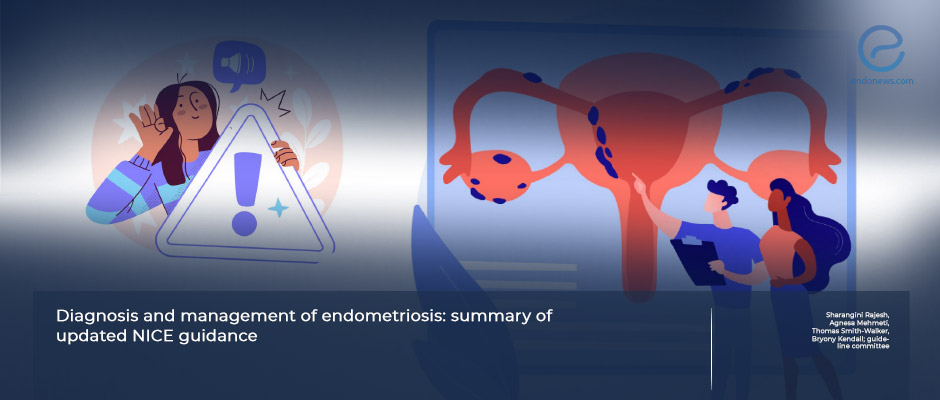NICE Guideline Update Reframes Endometriosis Care in 2024
Jun 18, 2025
Updated NICE Recommendations Aim to Reduce Delays and Improve Outcomes in Endometriosis Care
Key Points
Highlights:
- Endometriosis remains a prevalent, chronic condition with variable symptoms including pelvic pain, dyspareunia, dyschezia, dysuria, and infertility.
- The 2024 NICE guideline emphasizes earlier recognition, patient history, and a multidisciplinary approach to improve care.
- Imaging, particularly transvaginal ultrasound and pelvic MRI, is key in diagnosing deep endometriosis—but a normal scan should not exclude diagnosis.
Importance:
- Patients with suspected endometriosis still face an average diagnostic delay of up to eight years.
- This delay hinders timely symptom management and may lead to disease progression or complications.
- The updated guidelines focus on empowering clinicians to rely on history and clinical findings to initiate treatment earlier—even without definitive imaging results.
What's done here:
- This publication presents an updated summary of the 2024 NICE guidelines on the diagnosis and management of endometriosis.
- The updates reflect new evidence and address known gaps in prior editions—particularly around diagnostic delay, imaging limitations, and treatment strategies.
Main key features :
- Diagnosis should be based on symptom history even if imaging is inconclusive.
- A positive family history (especially in first-degree relatives) increases diagnostic consideration.
- Imaging should be used to assess deep endometriosis, but the absence of findings should not exclude diagnosis or delay management.
- Hormonal treatment may be offered empirically based on symptoms alone.
- Surgical referral is appropriate for patients not responding to medical management or with suspected deep endometriosis.
From the Editor-in-Chief – EndoNews
"The 2024 NICE guideline update is a critical reminder that the burden of endometriosis extends far beyond delayed diagnosis—it is also about missed opportunities for earlier, patient-centered care. By reaffirming the value of symptom-based diagnosis and encouraging action even in the absence of definitive imaging, this guidance shifts the clinical culture toward trust in patient narratives. It also highlights the importance of multidisciplinary care and timely referrals for those with refractory symptoms. For clinicians, this is a call to listen earlier, act faster, and rethink what constitutes sufficient evidence to start treatment."
Lay Summary
Endometriosis is a common gynecological condition that can cause chronic pelvic pain, painful periods, pain during sex, urination, or bowel movements, and infertility. Despite its prevalence, many women face long delays—often up to eight years—before receiving a formal diagnosis.
In January 2025, the National Institute for Health and Care Excellence (NICE) published an updated version of its clinical guideline on the diagnosis and management of endometriosis in The BMJ. This 2024 update emphasizes earlier recognition and intervention based on clinical symptoms, even if imaging results are normal.
The guideline highlights the importance of a detailed medical history, particularly a positive family history in first-degree relatives. It recommends the use of transvaginal ultrasound and pelvic MRI for assessing suspected deep endometriosis and calls for broader availability of imaging in primary care.
Importantly, the updated recommendations change referral guidance from "consider referral" to a stronger "refer," aiming to improve access to specialist care. These changes reflect a shift toward proactive, symptom-driven diagnosis and treatment, with the goal of reducing diagnostic delays and improving quality of life for those affected.
Research Source: https://pubmed.ncbi.nlm.nih.gov/39890103/
endometriosis diagnosis management NICE

